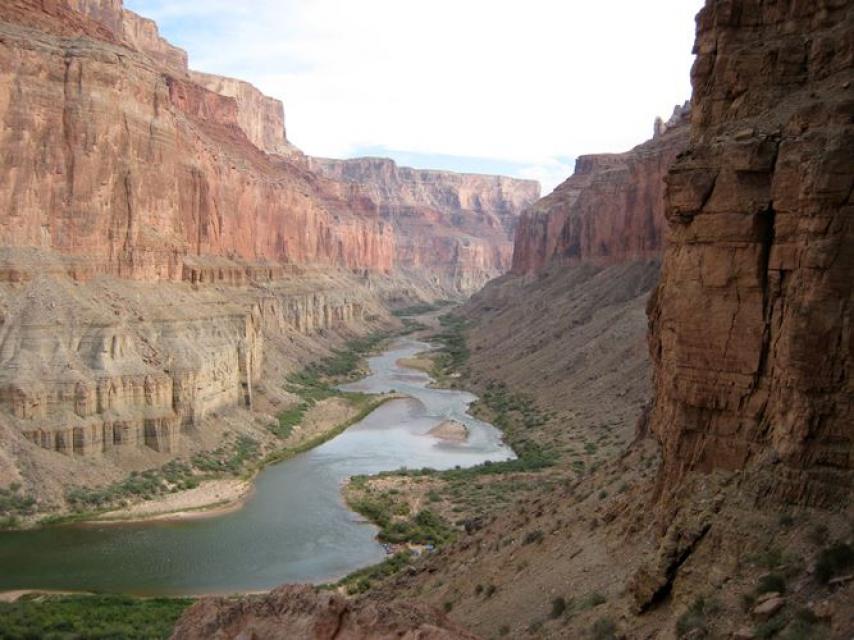Colorado River Water and Mexico
The Mexican Water Treaty of 1944 committed the U.S. to deliver 1.5 million acre-feet of water to Mexico on an annual basis, plus an additional 200,000 acre-feet under surplus conditions. The treaty is overseen by the International Boundary and Water Commission.
Colorado River water is delivered to Mexico at Morelos Dam, located 1.1 miles downstream from where the California-Baja California land boundary intersects the river between the town of Los Algodones in northwestern Mexico and Yuma County, Ariz.
The Colorado’s natural terminus is the Gulf of California in Mexico, but because of the dams and diversion facilities throughout the Colorado River Basin, natural flow rarely reaches the Gulf. Water diverted at Morelos Dam is primarily used to irrigate Mexicali Valley farmland and supply the cities of Mexicali, Tecate and Tijuana.
Mexico and Colorado River Water Recent Agreements
In 2007 Mexico and the United States agreed to a formal process managed by the IBWC to discuss “a number of issues of mutual concern to both nations related to the Colorado River.” The discussions resulted in a series of Minutes (agreements) to the 1944 Treaty designed to increase cooperation between the two countries on management of the river.
Among the agreements, the milestone Minute 319 includes an agreement between the U.S. and Mexico that partially resolves the question of when Mexico will take a shortage in its Colorado River supplies.
Mexico agreed to take a lesser amount of water during times of drought in exchange for establishment of the Intentionally Created Mexican Apportionment. Mexico will be allowed to store water in Lake Mead during times of surplus or when, because of infrastructure problems, it cannot use its entire annual allocation. Minute 319 also solidified ongoing water supply/environmental restoration work in the Mexican Delta. In 2014, the gates of Morelos Dam on the Arizona-Mexico border were lifted to allow a pulse flow of water into the final stretch of the Colorado River for eight weeks.
A continuation of Minute 319 called Minute 323 was finalized in September 2017. The agreement provides a continuous flow of water to the Colorado River Delta and expands the restored habitat area from 1,700 to 4,300 acres. Mexico will continue to store water in Lake Mead and both governments will provide funding and other resources for research projects along the border and throughout the region. In 2021, a May to October release of 35,000 acre-feet of water occurred to help create environmental benefits for plants, birds and wildlife.
Minute 323 requires that the U.S. contribute $31.5 million to conservation projects in Mexico focused on improving infrastructure. These projects are expected to save about 200,000 acre-feet of water each year. The money will come not only from the U.S. government but from the Metropolitan Water District of Southern California, Southern Nevada Water Authority, Imperial Irrigation District and Central Arizona Water Conservation District. In return for their funding, these water agencies will receive a portion of the saved water. In addition to funding for conservation projects, the U.S. government and nongovernmental agencies will fund $18 million for the habitat restoration and monitoring.









